
April 24 - May 26, 2013
Curated by Emily Fitzpatrick
Presented by the Blackwood Gallery and the Masters of Visual Studies Program at the University of Toronto.
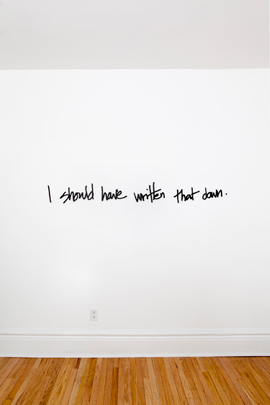
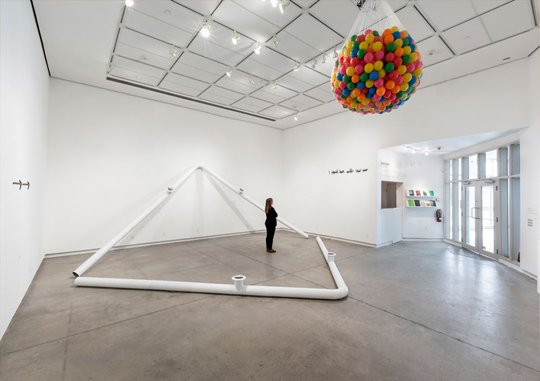
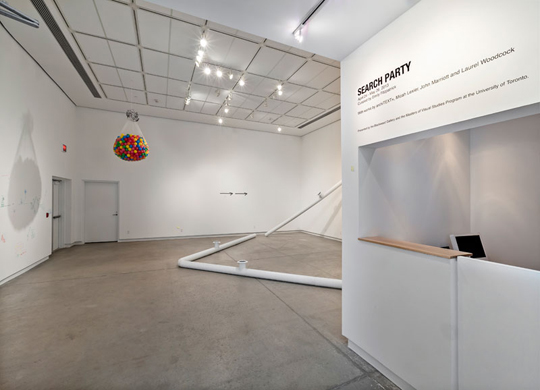

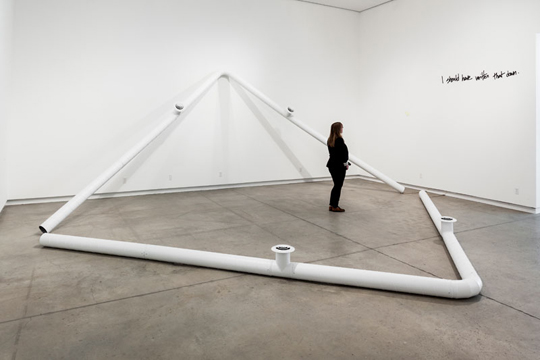
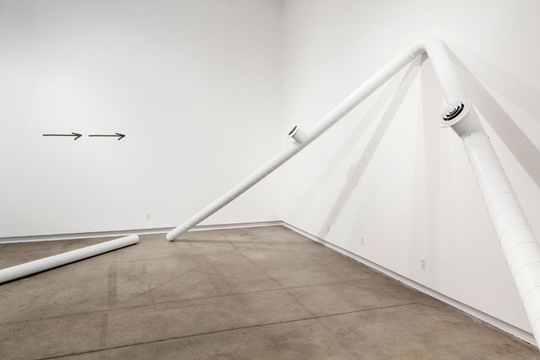
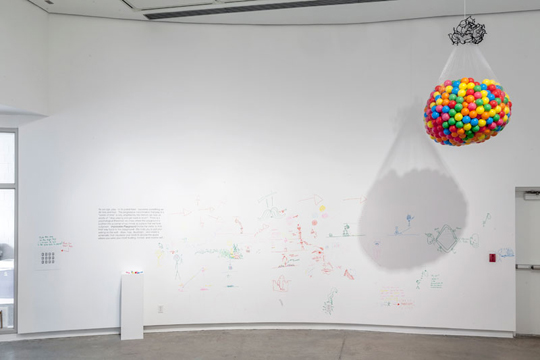

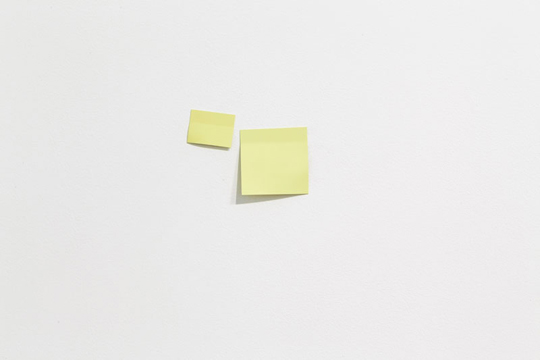
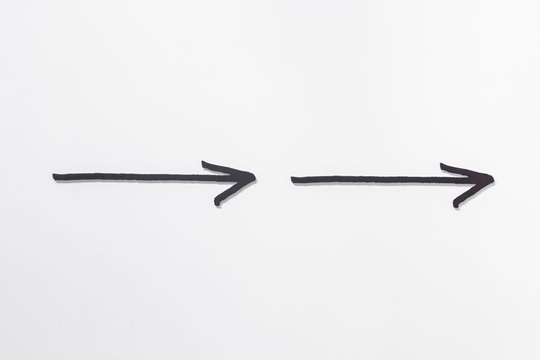
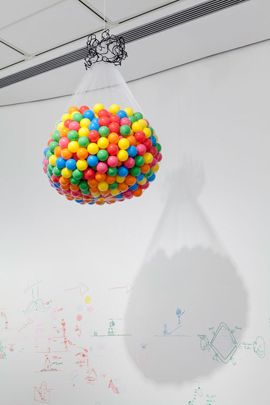
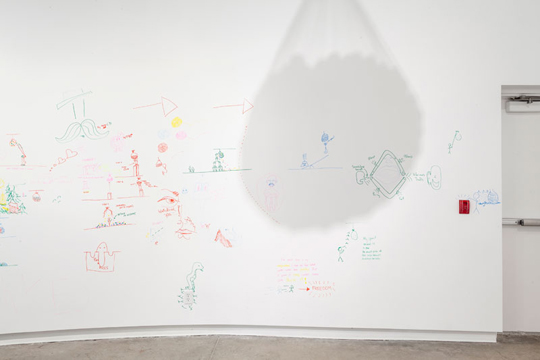

Opening Reception
Wednesday April 24, 5 - 8pm
A FREE shuttle bus will depart at 5:30pm from Mercer Union (1286 Bloor St W.) and return at 8pm. Artists will be in attendance.
FREE Contemporary Art Bus Tour
Sunday April 28, 12 – 5pm
The tour starts at 12noon at Koffler Gallery's Off-Site project at 48 Abell St. (Toronto) and then departs for Blackwood Gallery, Art Gallery of York University, Doris McCarthy Gallery and Justina M. Barnicke Gallery. Seating is limited. To RSVP call Blackwood Gallery at 905.828.3789 or email blackwood.gallery@utoronto.ca by Friday April 26 at 4pm.
Curatorial Tour
Blackwood Gallery, UTM
Sunday April 28, 1pm
… we make guilty of our disasters the sun, the moon, and the stars.
- William Shakespeare
The term disaster first appeared in the English language in the late sixteenth century, when William Shakespeare used it in his tragedy King Lear. The word was featured in a description of the idiocy of contemporary society, whereby people blamed the heavens and planetary influences for their personal folly and reckless judgment. The etymology of the word is the Old Italian term disastro, meaning “unfavourable to one’s stars.” Corresponding to astrological discourse, disastro’s Latin root word is astrum, meaning star. Together with the prefix dis-, for apart, the meaning conveys catastrophe, or, in astrological terms, the disappearance of a star from its constellation, the disruption of
and temporary disorientation.
Search Party is a response to the archaic meaning of disaster, composed of artworks that create a space of disorientation, unsettling the conventional composition of the art gallery. The artists use and manipulate the architectural cues and way-finding codes of the gallery to create multiple, unorthodox forms of circulation. The playful artworks of John Marriott, Laurel Woodcock, Micah Lexier and archiTEXT+ offer an antidote to the misery an individual suffers in a disordered state of being. Contrary to Shakespeare’s application of disaster, where chaos is the ultimate outcome of disruption and confusion, Search Party’s variant narratives collectively suggest a humorous liberation from the conformed space of the Blackwood Gallery.
The subject of disorder within spatial orientation is a common theme in the work of Toronto-based artist John Marriott. By introducing unexpected sights and sounds into gallery space, he unsettles viewers while creating an engaging and provocative aesthetic experience. Marriott’s work prompts the audience to consider what they bring to and extract from the gallery space. His current preoccupation with animal presence recalls his video projection Where the cat’s at (1999), which involved the presence of a domestic predatory animal within the gallery space to see how each of their imposed cultural qualities inflected the other. With his latest multi-media installation, Perimeter, Marriott emanates wild animal sounds through a network of connected ductwork that awkwardly reclines across the gallery space. As with Where the cat’s at, there is an interplay between the room (an enclosed, cultural space) and the animal (a source of otherness generated by culture, an idea of nature). In the uneasy proximity of a gallery, their respective functions in the social order are pushed against each other, making obvious a dissonance that results from cultural assumptions. This disorientation is productive, provoking a variety of topical conversations relating to Modernist forms or analogies between art and bureaucratic spaces, ultimately transforming a proscriptive artwork into an experience that draws upon other experiences.
In line with the unsettling temperament of Search Party, Laurel Woodcock employs displacement practices in her work while exploring the dexterity and ambiguity of language. Based in Toronto, Woodcock’s practice is thematically founded on using common forms of communication (song lyrics, sayings, punctuation, etc.) as influential devices to subtly manipulate the routes of passers-by. She plays with the representational characteristics of language in comical and playful ways by exploiting its possible problems and generating alternative meanings. As an example, Woodcock’s stickies (2011) series draws on the familiar image of a yellow Post-it note. She fabricates multiple steel stickies that she positions in candid and unassuming locations in a gallery setting. Standing in visually for a thought process, stickies puts into question the polished appearance of the exhibition, implying missing or forgotten information. Hesitation and uncertainly are also promoted in a new work of Wookcock’s, ditto (2012)—a black, aluminium sign reading, “I should have written that down.” The phrase suggests the anxiety of overlooking something. When situated in a gallery context, the words advocate a change of direction to obtain certainty, encouraging the displacement effect temporarily experienced by the viewer.
Further developing the navigational possibilities in a space of disorientation, Micah Lexier’s This is an arrow… (2009)seriesprovides familiar way-finding signs that suggest a conventional directive to exhibition viewers. Based in Toronto, Lexier is a multimedia artist whose practice merges the conventions of conceptual art with sculpture, installation and text-based work. Recognized for detailed precision, his artworks typically consist of concocted systems of data. The artist’s painted, waterjet-cut aluminium This is an arrow… points in a certain direction, right or wrong, possible or impossible to navigate. Etched onto the face of each arrow is a small description that outlines and asserts the clear individual course of the piece, usually beginning with “This is an Arrow Pointing To…”. Along with using the familiar, everyday symbol of the arrow, Lexier cleverly exploits the composite system of a space to guide viewers and make them aware of their positions in the gallery. Regardless of the positioning, This is an arrow… provides an optional and potentially misdirecting navigation pattern that coincides with and contests other forms of circulation in the gallery space.
In addition to the artworks of Marriott, Woodcock and Lexier, an alternative passage through the exhibition will be provided by archiTEXT+, a multidisciplinary design consultancy founded in the city of Toronto. The team is comprised of young creators from multiple divisions of the artistic community who have, since 2006, instituted their agency as a nucleus between the worlds of architecture, academics and government. Their installation work, public engagement projects and creative strategies have enticed an emergent public to better comprehend their built environments. Through experimental and playful approaches, they curate concepts and environments that can cultivate and promote multiple discourses. They utilize the element of play as a strategy for participation, risking the possibility of a difficult experience for any partaker by encouraging them to contribute and grow beyond their comfort zone. For Search Party, the collective makes a lively intervention into the space, using familiar imagery of play, such as a colourful ball crawl, to persuade involvement and encouraging a discourse that responds to the physical composition of the exhibition.
Search Party affords the participating artists an opportunity to create individual patterns and different forms of circulation all the way through the gallery space, which will ultimately disrupt each other, creating a temporary environment of disorientation. Multiple realities will exist together in the confines of a standard, white-cube contemporary space. Together, the works will contest traditional gallery conduct and offer playful potentials in discovering alternative ways and narratives. Akin to the chance disaster, the viewer is denied normality and must reckon with the chaotic disorder in which they are situated to create personal moments of creativity and experimentation.
— Emily Fitzpatrick
Exhibition Brochure
Click here for the exhibition brochure.

archiTEXT+ is a design practice and think tank based in Toronto. With backgrounds in architecture, design and business, the inspired team formulates inventive projects that engage conversations, incite provocative ideas and engage discourse around innovation and social change. archiTEXT+’s dynamic collection of projects includes, Nourish (Come Up to My Room, 2012), What Has Architecture Done For You Lately (Design Exchange, 2009), and the Community Design Initiative. The collective’s members have been strategic partners for Migrating Landscapes (Canadian Pavilion, Venice Biennale 2012) and ambassadors for 2012 TO DO (Toronto Design Week), and are actively involved in bridging the space between sectors using creativity and design thinking.
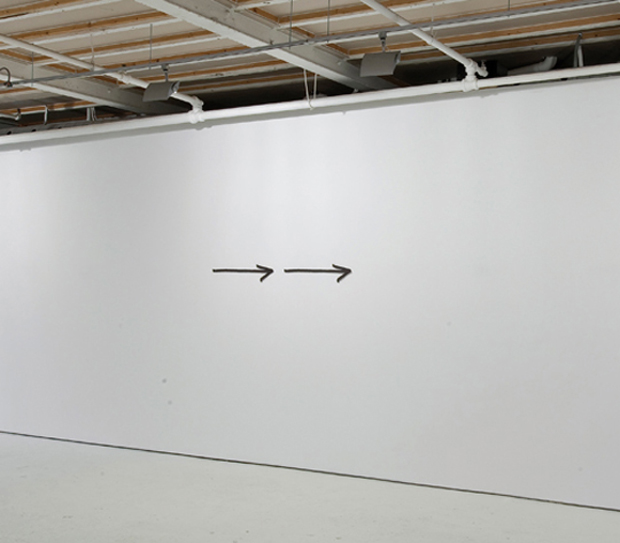
Micah Lexier is a Toronto-based artist who also collects and organizes exhibitions. He has a deep interest in measurement, puzzles, found imagery and the kinds of casual marks we make in our day-to-day lives. He has had over 100 solo exhibitions and participated in almost 200 group exhibitions. In the fall of 2013, The Power Plant will be presenting a 15-year survey exhibition of Lexier’s work entitled One, and Two, and More Than Two. Lexier’s work is in numerous public and corporate collections including The British Museum (London), the Contemporary Art Gallery (Sydney) and The National Gallery of Canada (Ottawa). Micah Lexier is represented by Birch Libralato (Toronto).

John Marriott is a Vancouver-born artist and writer whose creative practice includes a range of media: video, photography, installation and performance. Since 1990, he has participated in a range of solo and group exhibitions, performances and screenings in Toronto, Halifax, New York, Belfast, Nuremberg, Glasgow and Vienna. Marriott's installation work was featured in solo shows at The Power Plant, Mercer Union and the Koffler Gallery. His video Vegetative States was an entry at The ZKM in Karlsruhe (2004). Marriott currently lives and works in Toronto.
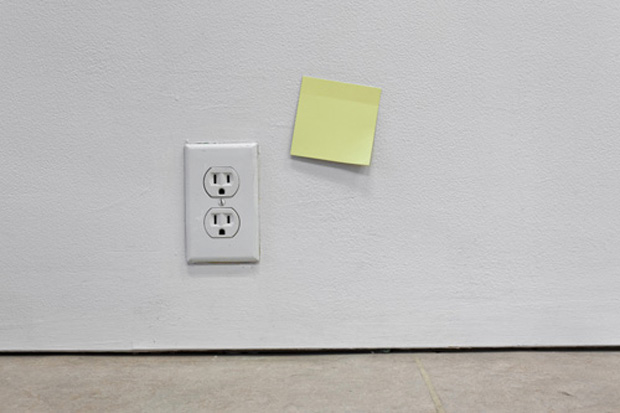
Born in Montreal, Laurel Woodcock is a multidisciplinary artist working in installation, sculpture, audio, photography, editions and videos. Currently living in Toronto, her practice is based on the possibilities and awareness of familiar languages and dialectal facets. Woodcock has exhibited nationally at The Power Plant, the Art Gallery of Ontario, the Contemporary Art Gallery, the Art Gallery of Greater Victoria and the Agnes Etherington Art Centre (Kingston, ON), among other Canadian institutions. Internationally, she has shown her videos in New York, London, Chicago, Cairo, Berlin, Paris, Barcelona and Glasgow. She is represented by MKG127 in Toronto.
Generously supported by the Canada Council for the Arts. A special thank you for the kind contribution from the John H. Daniels Faculty of Architecture, Landscape, and Design, University of Toronto.
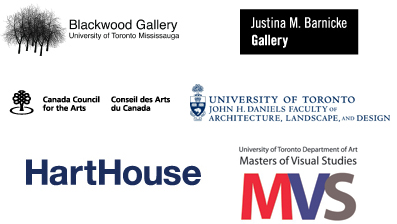
Emily Fitzpatrick would like to thank the artists archiTEXT+ (Zahra Ebrahim, Sherry Lin, Carla Weinberg), Micah Lexier, John Marriott and Laurel Woodcock for their wonderful work, enthusiasm and generosity; Barbara Fischer for her insightful mentorship, problem solving talents and dedicated guidance; Christof Migone, Juliana Zalucky, Julia Abraham and Johnson Ngo for all their hard work, accommodating support and professionalism; the curatorial panel committee for their time and advice; Ann MacDonald, Christof Migone, Sarah Robayo Sheridan, Kim Simon, Lisa Steele, and especially my external advisor Marcin Kedzior for their encouraging counsel and stimulating interest; Trevor Embury for his flexibility and incredible designs; Gina Badger for her ideas and excellent editing; Robert Birch and MKG127; the great people at the Justina M. Barnicke Gallery and Art Metropole; family and friends for their thoughtful questions, steady optimism and Cold Tea talks; and Julia Abraham and Michael Polubiec for bringing humour and being terrific colleagues.
The artist Laurel Woodcock would like to acknowledge the support of MKG 127.
SEARCH PARTY is one of three exhibitions running concurently produced as part of the requirements for the MVS degree in Curatorial Studies at the University of Toronto.
At the Justina M. Barnicke Gallery:
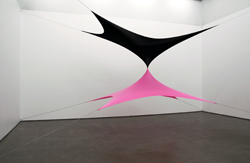
I THOUGHT THERE WERE LIMITS
March 28 - May 18, 2013
Works by Karen Henderson, Yam Lau, Gordon Lebredt, Kika Thorne and Josh Thorpe
Curated by Julia Abraham
At the Doris McCarthy Gallery:
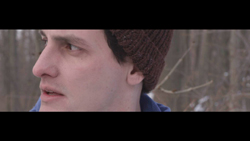
SIMONE JONES: WITHIN DISTANCE
April 25 - May 30, 2013
Curated by Michael Polubiec
For more information on the program, please visit www.art.utoronto.ca